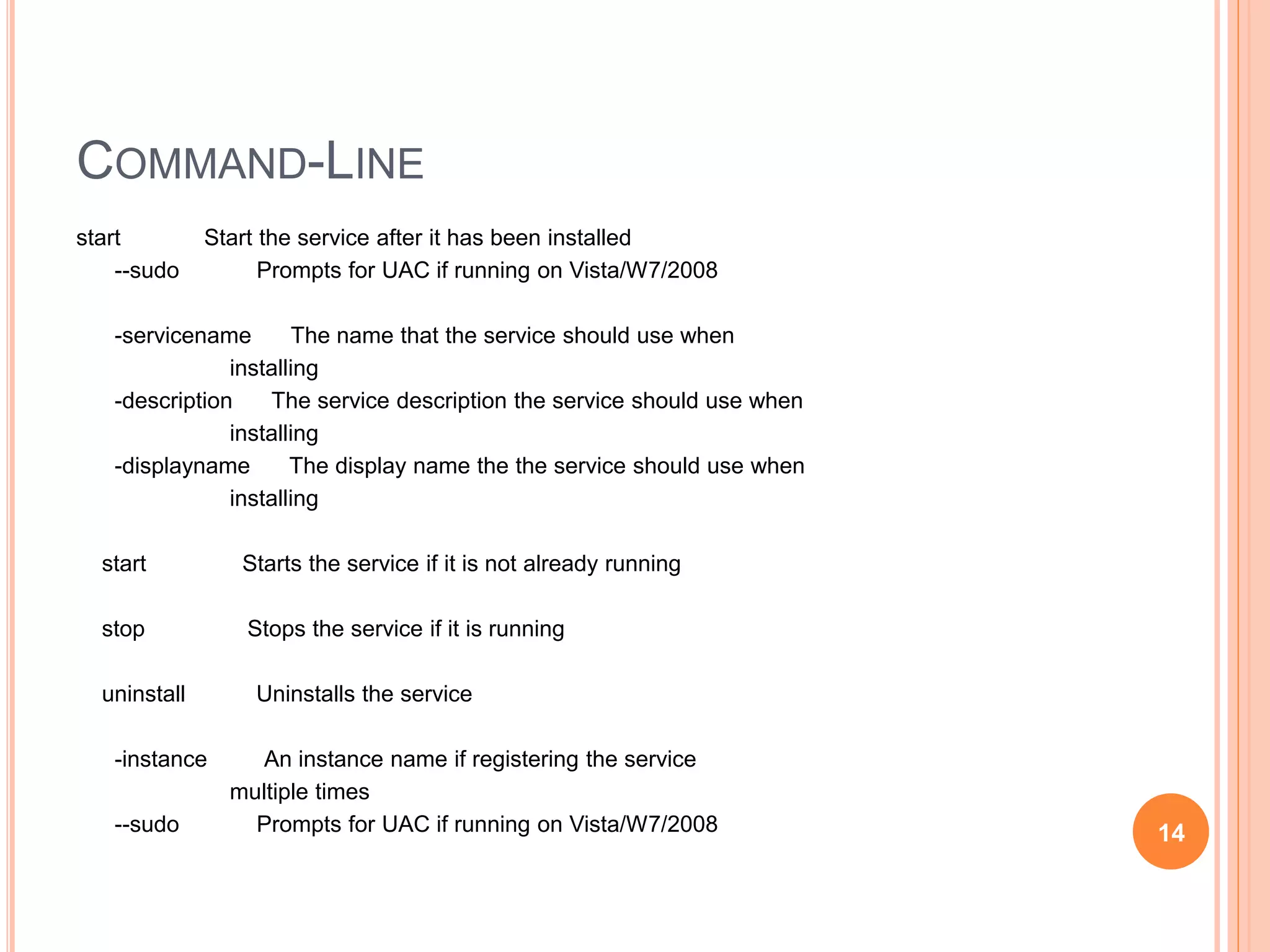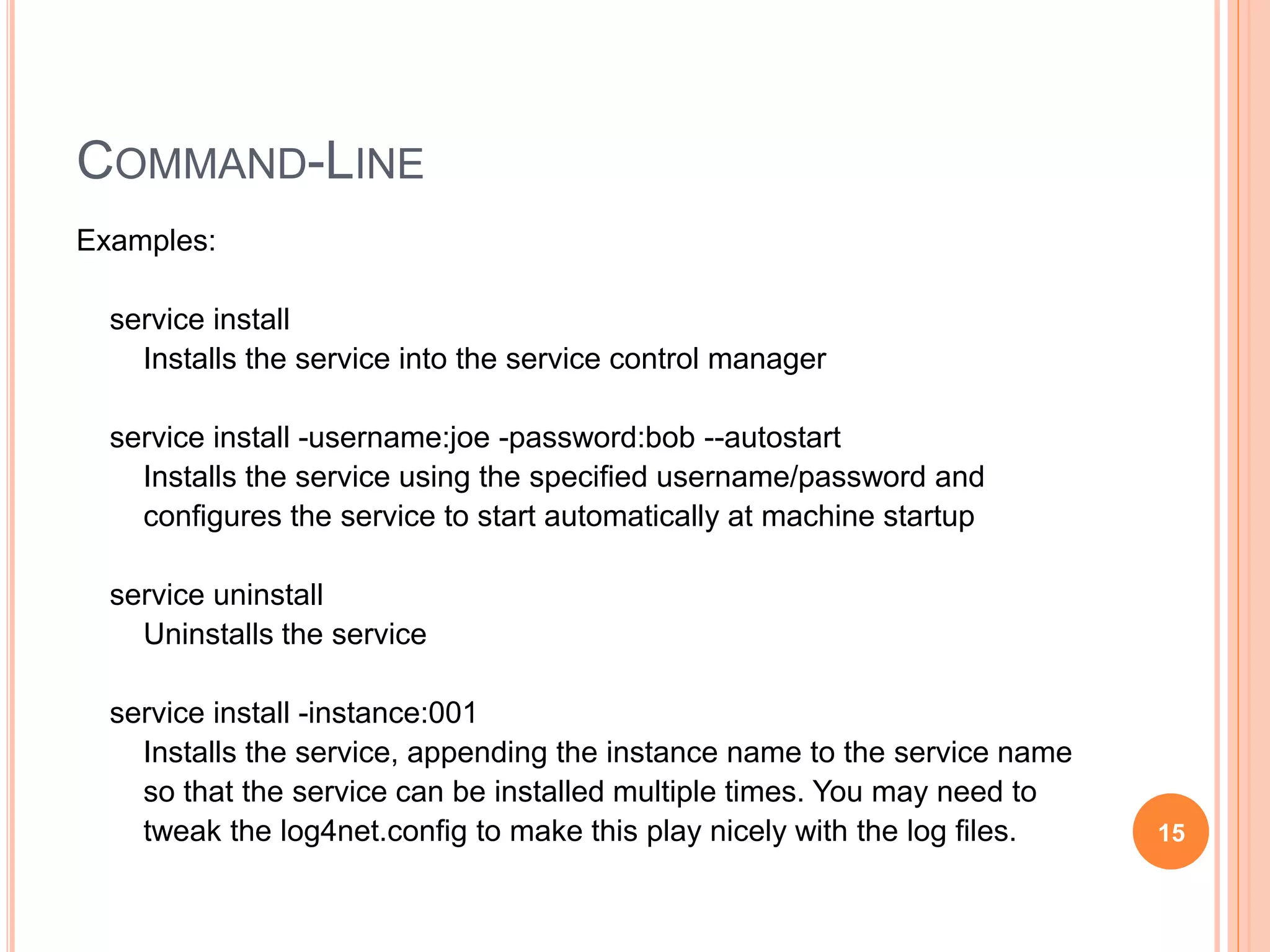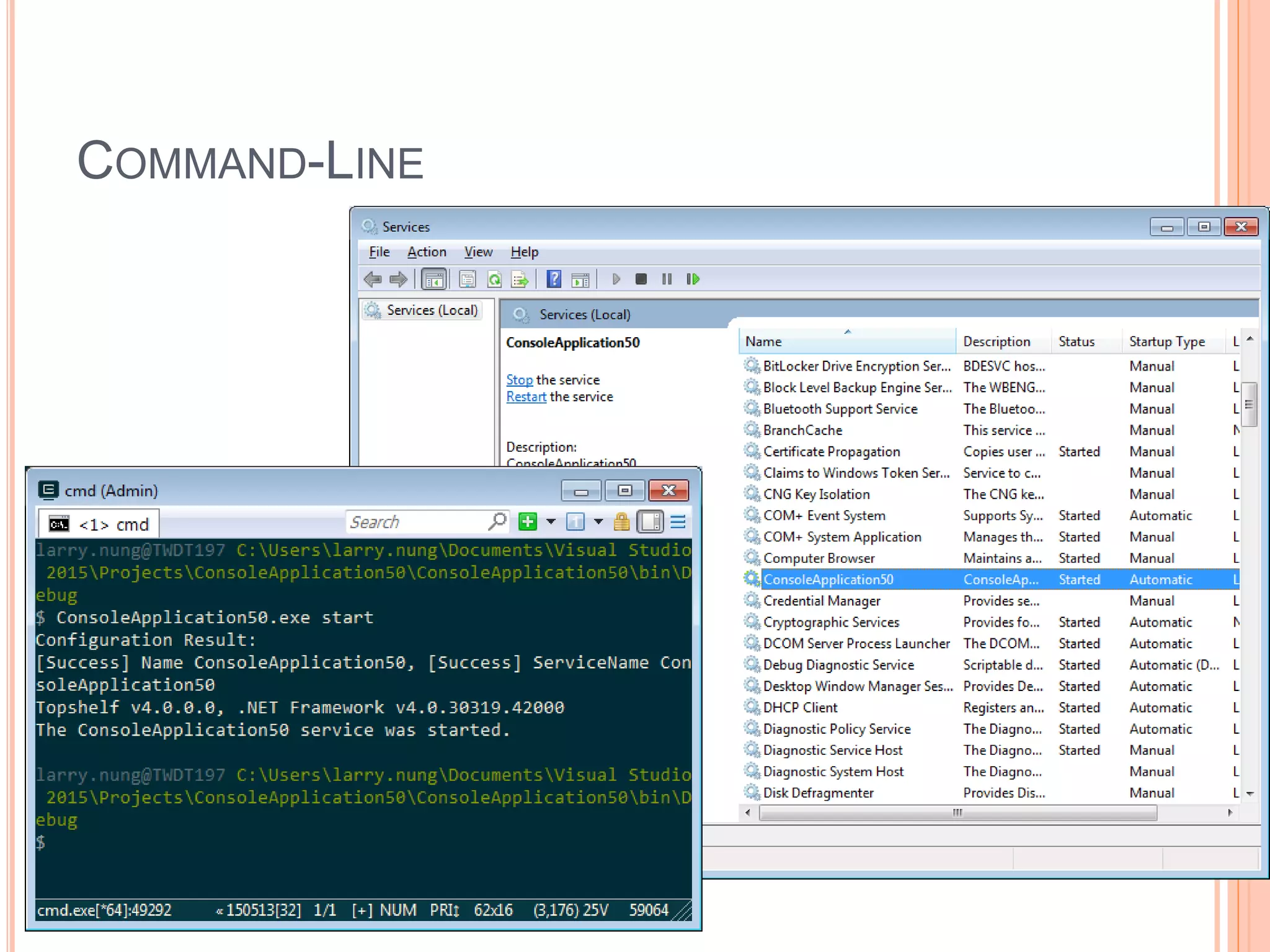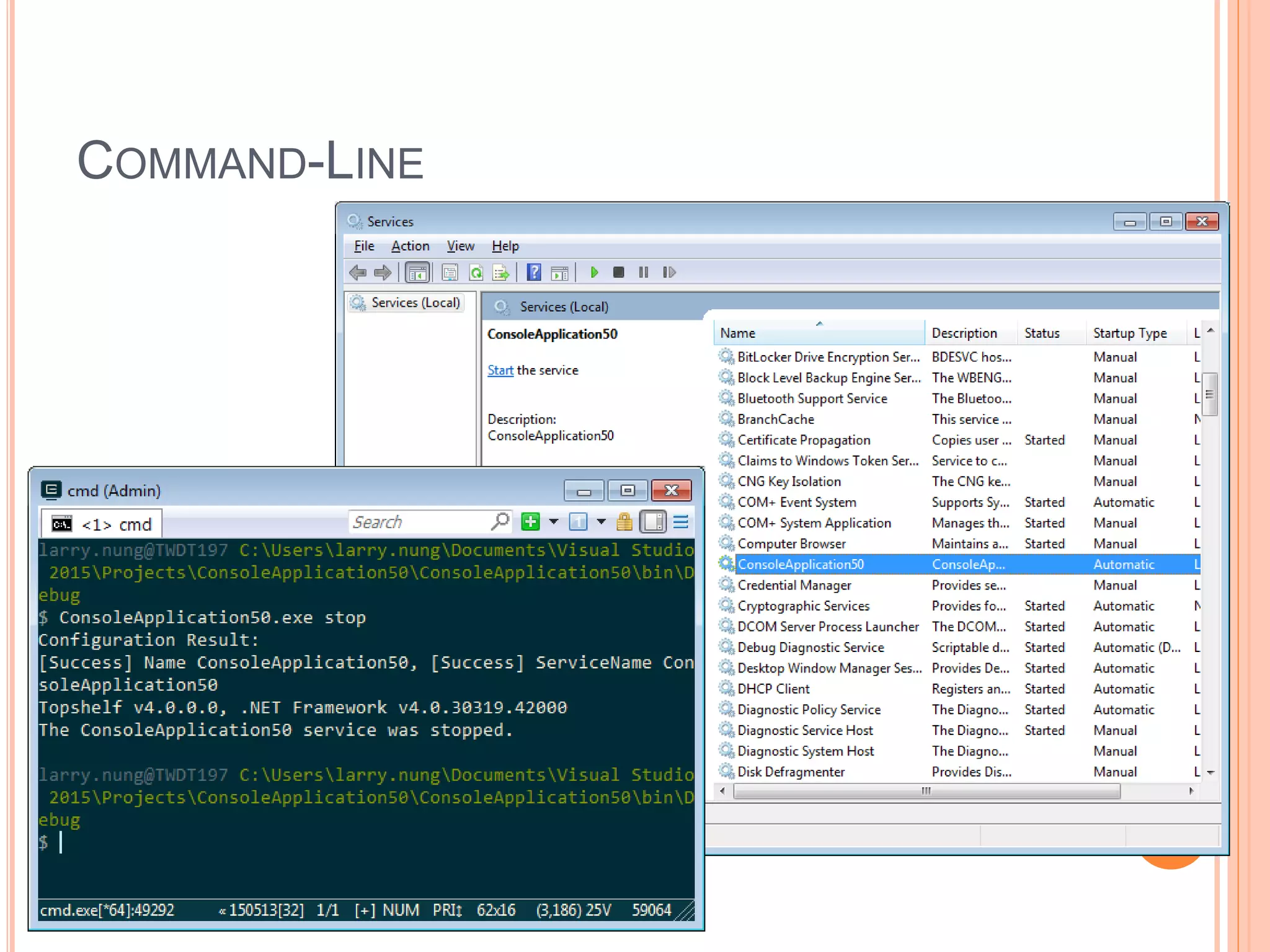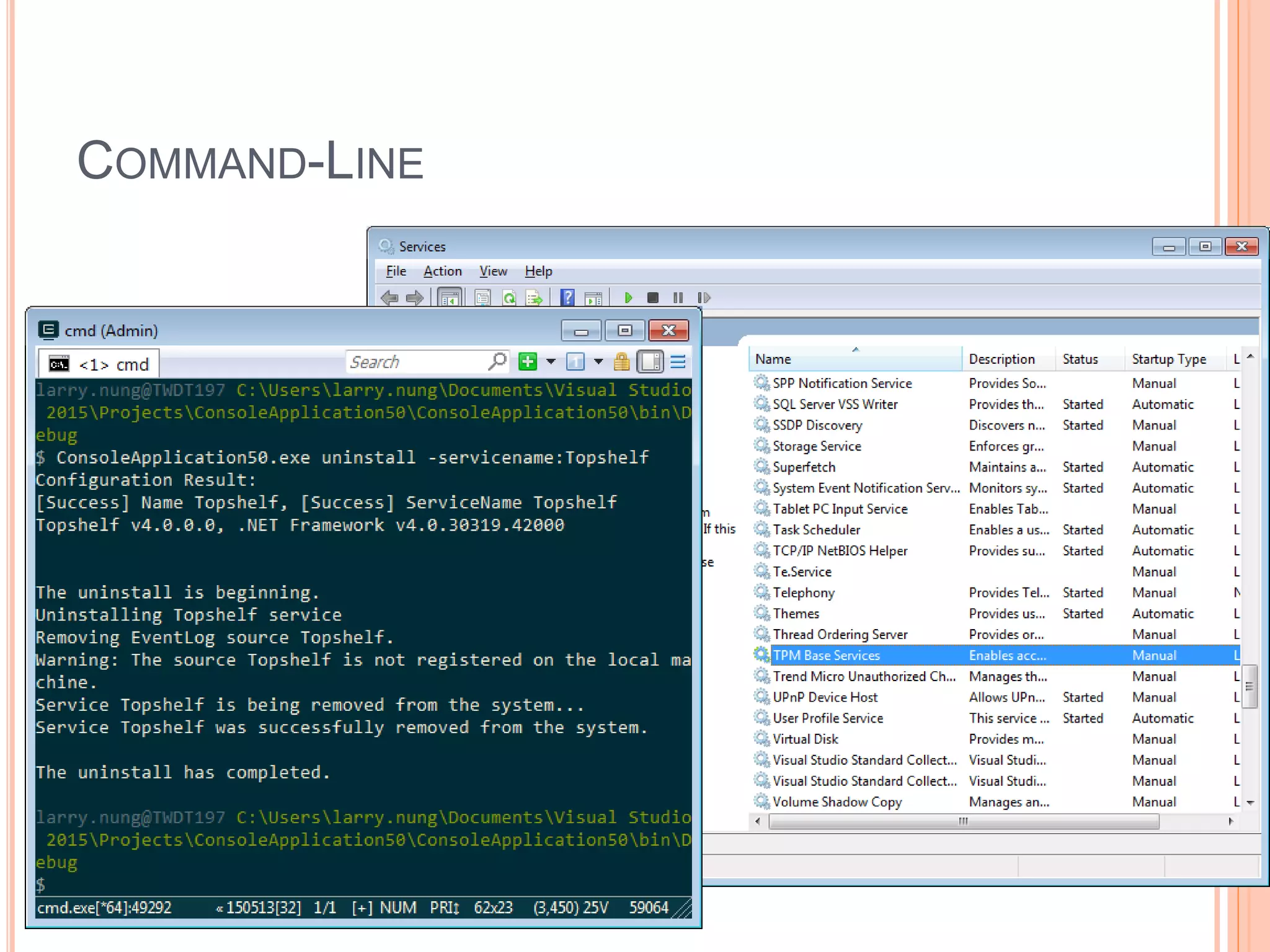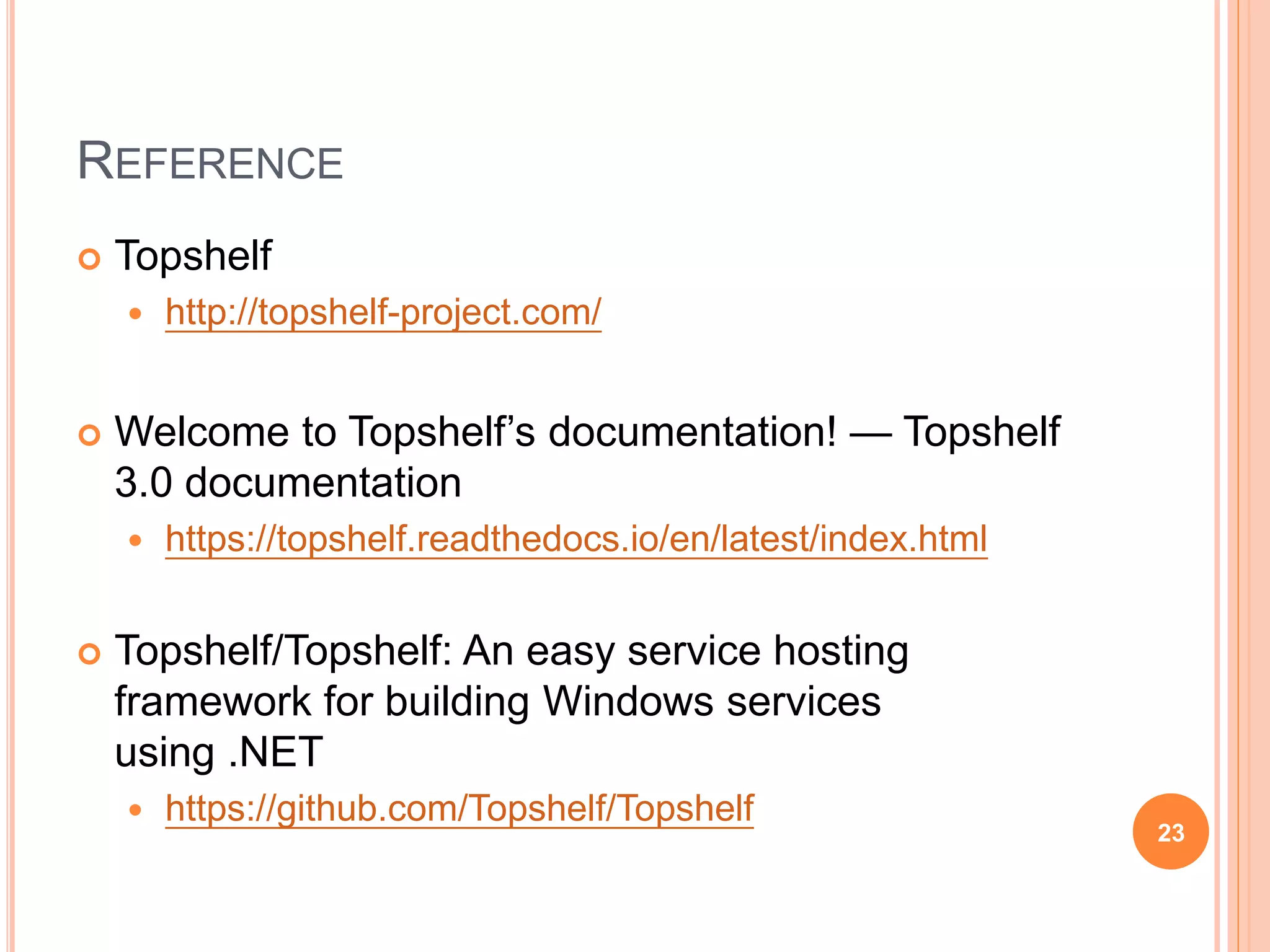Topshelf is an easy service hosting framework for building Windows services using .NET. The presentation introduces Topshelf and covers getting started, building custom services, using command line options, and provides references for additional information. Getting started with Topshelf involves calling HostFactory.Run and registering a service that defines start and stop methods. Custom services are built by inheriting from ServiceControl. Command line options allow installing, uninstalling, starting, and stopping services.

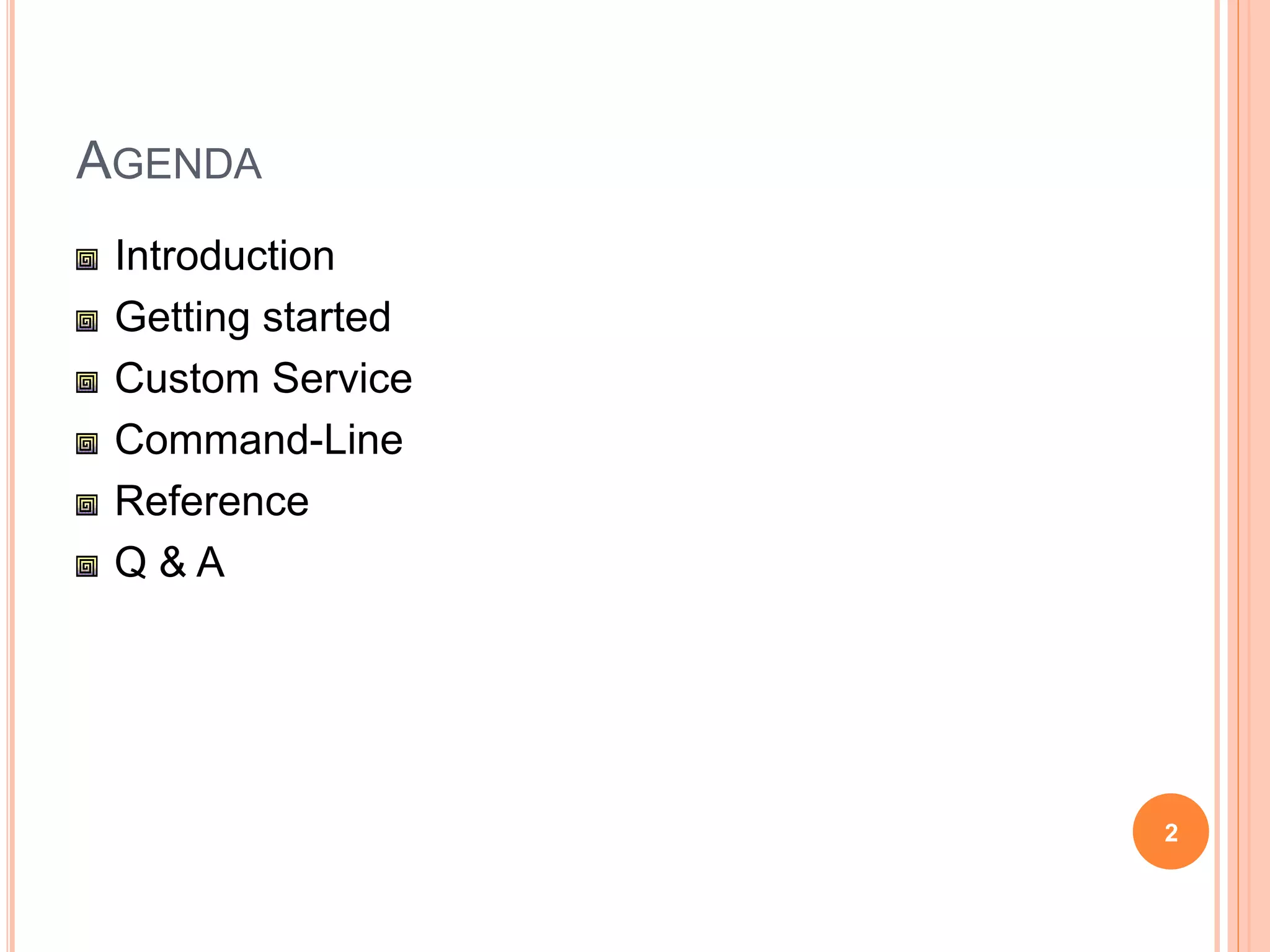

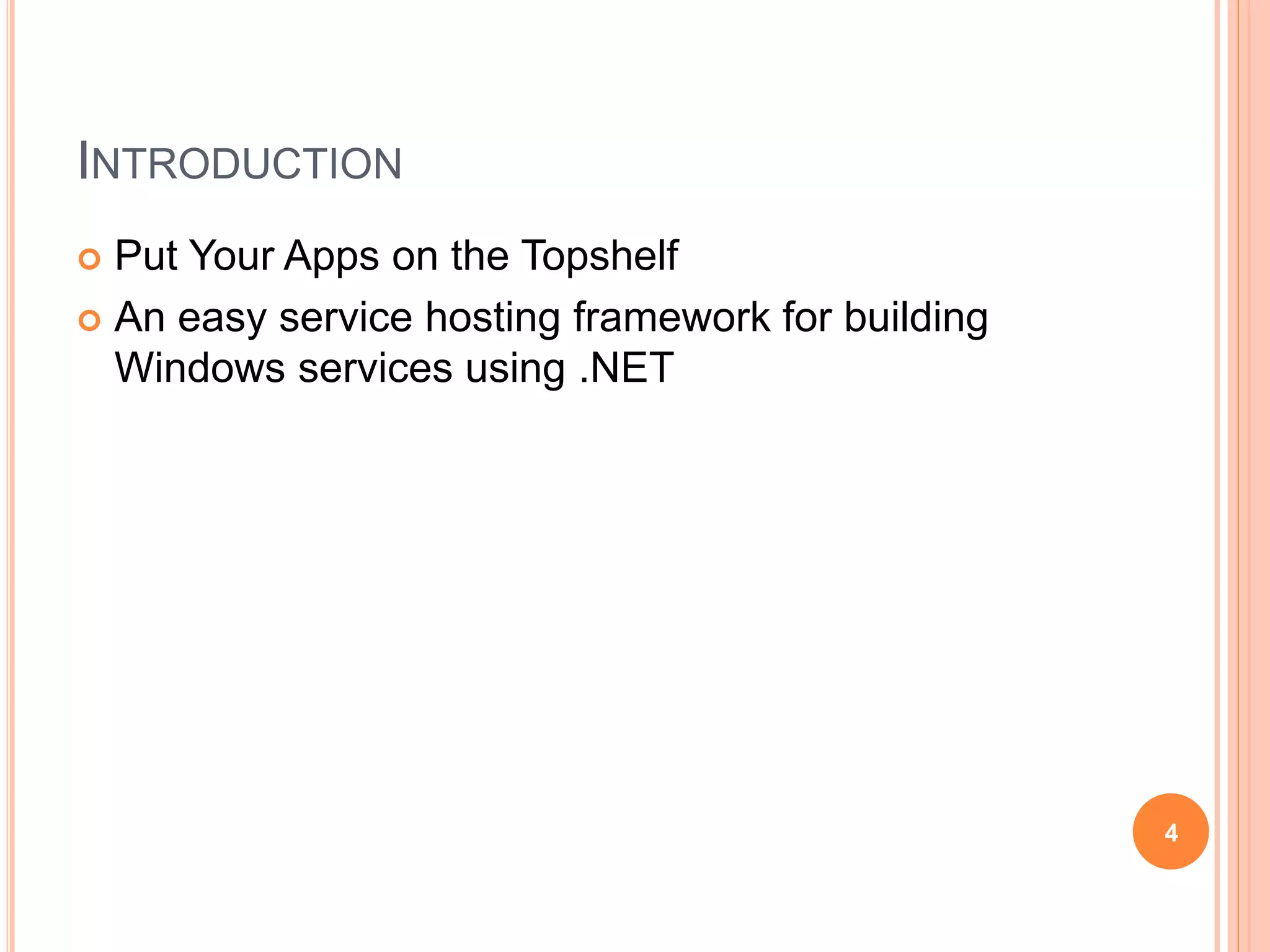



![GETTING STARTED using System; using Topshelf; … class Program { static void Main(string[] args) { HostFactory.Run(x => { x.Service<Program>(s => { s.ConstructUsing(name => new Program()); s.WhenStarted(p => p.Start()); s.WhenStopped(p => p.Stop()); }); }); } public void Start() { Console.WriteLine("Service start..."); } public void Stop() { Console.WriteLine("Service stop..."); } } 8](https://image.slidesharecdn.com/topshelf-aneasyservicehostingframeworkforbuildingwindowsservicesusing-161013042853/75/Topshelf-An-easy-service-hosting-framework-for-building-Windows-services-using-NET-8-2048.jpg)
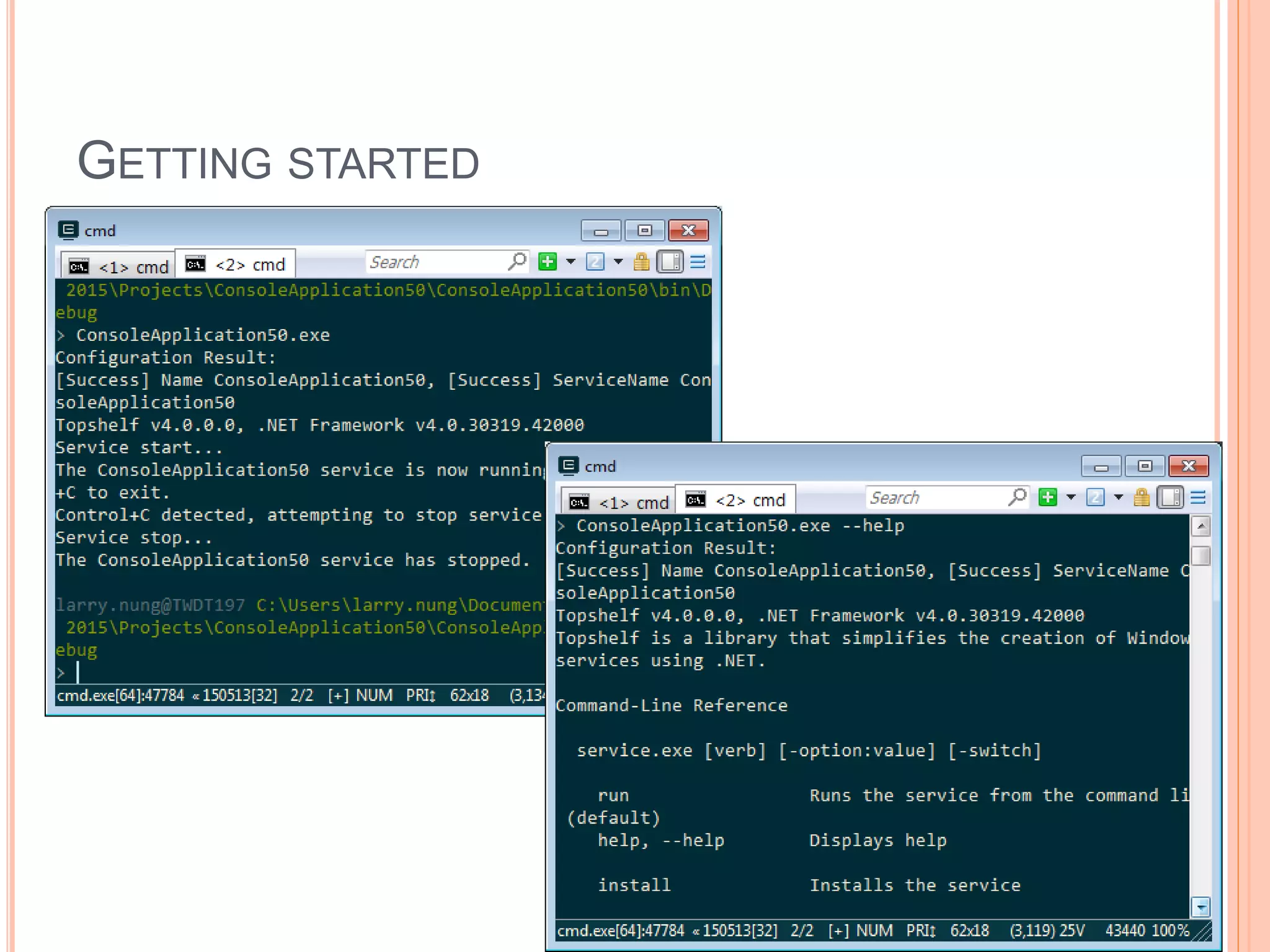

![CUSTOM SERVICE using System; using Topshelf; ... class Program { static void Main(string[] args) { HostFactory.Run(x => { x.Service<ProgramService>(); }); } } class ProgramService : ServiceControl { public bool Start(HostControl hostControl) { Console.WriteLine("Service start..."); return true; } public bool Stop(HostControl hostControl) { Console.WriteLine("Service stop..."); return true; } } ... 11](https://image.slidesharecdn.com/topshelf-aneasyservicehostingframeworkforbuildingwindowsservicesusing-161013042853/75/Topshelf-An-easy-service-hosting-framework-for-building-Windows-services-using-NET-11-2048.jpg)

![COMMAND-LINE service.exe [verb] [-option:value] [-switch] run Runs the service from the command line (default) help, --help Displays help install Installs the service --autostart The service should start automatically (default) --disabled The service should be set to disabled --manual The service should be started manually --delayed The service should start automatically (delayed) -instance An instance name if registering the service multiple times -username The username to run the service -password The password for the specified username --localsystem Run the service with the local system account --localservice Run the service with the local service account --networkservice Run the service with the network service permission --interactive The service will prompt the user at installation for the service credentials 13](https://image.slidesharecdn.com/topshelf-aneasyservicehostingframeworkforbuildingwindowsservicesusing-161013042853/75/Topshelf-An-easy-service-hosting-framework-for-building-Windows-services-using-NET-13-2048.jpg)
